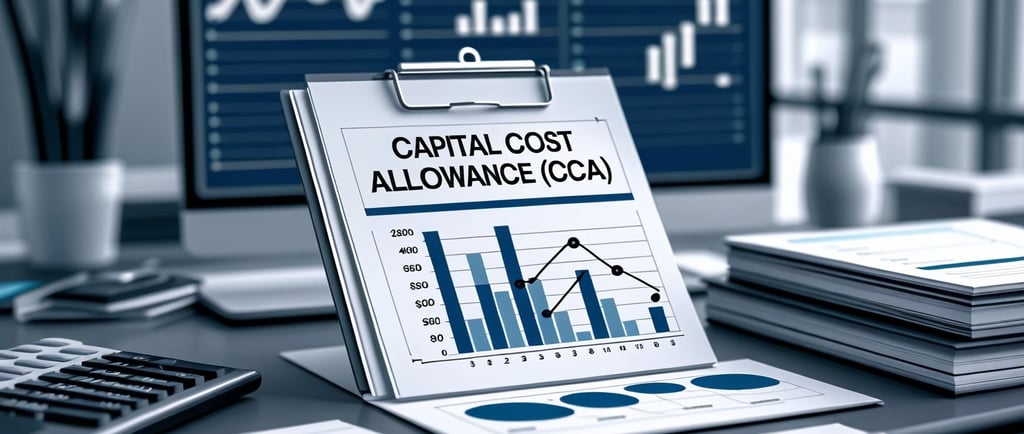Understanding CCA Depreciation: Claiming on Tools, Equipment, and Vehicles
Learn how to claim Capital Cost Allowance (CCA) on tools, equipment, and vehicles for your business. Understand CCA classes, rates, and how to reduce your taxable income legally.
10/8/20252 min read


Introduction to Capital Cost Allowance (CCA)
The Capital Cost Allowance (CCA) is a critical tax concept for entrepreneurs and businesses seeking to manage their financials effectively. Under Canadian tax law, CCA is a means of deducting the depreciation of certain capital assets against taxable income. It allows businesses to recover the cost of their tools, equipment, and vehicles over time, enhancing cash flow while adhering to tax obligations.
Eligibility for CCA Claims
To benefit from claiming CCA, it’s essential first to determine whether your capital assets qualify. Tools such as saws, drills, and other machinery, along with office equipment and vehicles used for business purposes, can typically qualify for depreciation claims. Each type of asset has a specific CCA rate that illustrates the percentage of its value that can be amortized annually.
For example, motor vehicles generally have a different depreciation rate compared to office equipment. Understanding these rates is crucial, as they dictate how much you can deduct from your taxable income. The CCA system is split into classes; therefore, knowing to which class your assets belong will greatly aid in the claiming process.
How to Claim CCA on Your Assets
Claiming CCA for tools, equipment, and vehicles involves a systematic approach. Firstly, you must ensure that the capital asset is included within the CCA regime. Upon purchase, you'll categorize the asset according to the CCA class it belongs to, subsequently applying the specific depreciation rate accordingly.
Once you've established your assets’ classes and corresponding rates, it’s important to maintain accurate records. This includes invoices, purchase receipts, and any forms of documentation that validate the asset's cost and business usage. When filing your business tax return, you will report your CCA claim on the appropriate form, usually in Part 8 of your T2 return or Schedule 1 for self-employed individuals.
Importantly, if you sell a CCA asset or it ceases to be used in the business, you'll need to account for a recapture of CCA, which could affect your tax calculations in future years. Careful consideration of these factors can help optimize your tax situation.
Conclusion: The Importance of CCA in Financial Management
In conclusion, understanding and claiming Capital Cost Allowance on tools, equipment, and vehicles plays an integral role in a business's financial strategy. It not only assists in managing cash flow but also significantly impacts profitability through legitimate tax deductions. As laws and regulations are subject to change, consulting with a tax professional or accountant is always advisable to ensure that you are fully compliant while maximizing your claims efficiently.
TiKi Tax
© 2025. All rights reserved.
